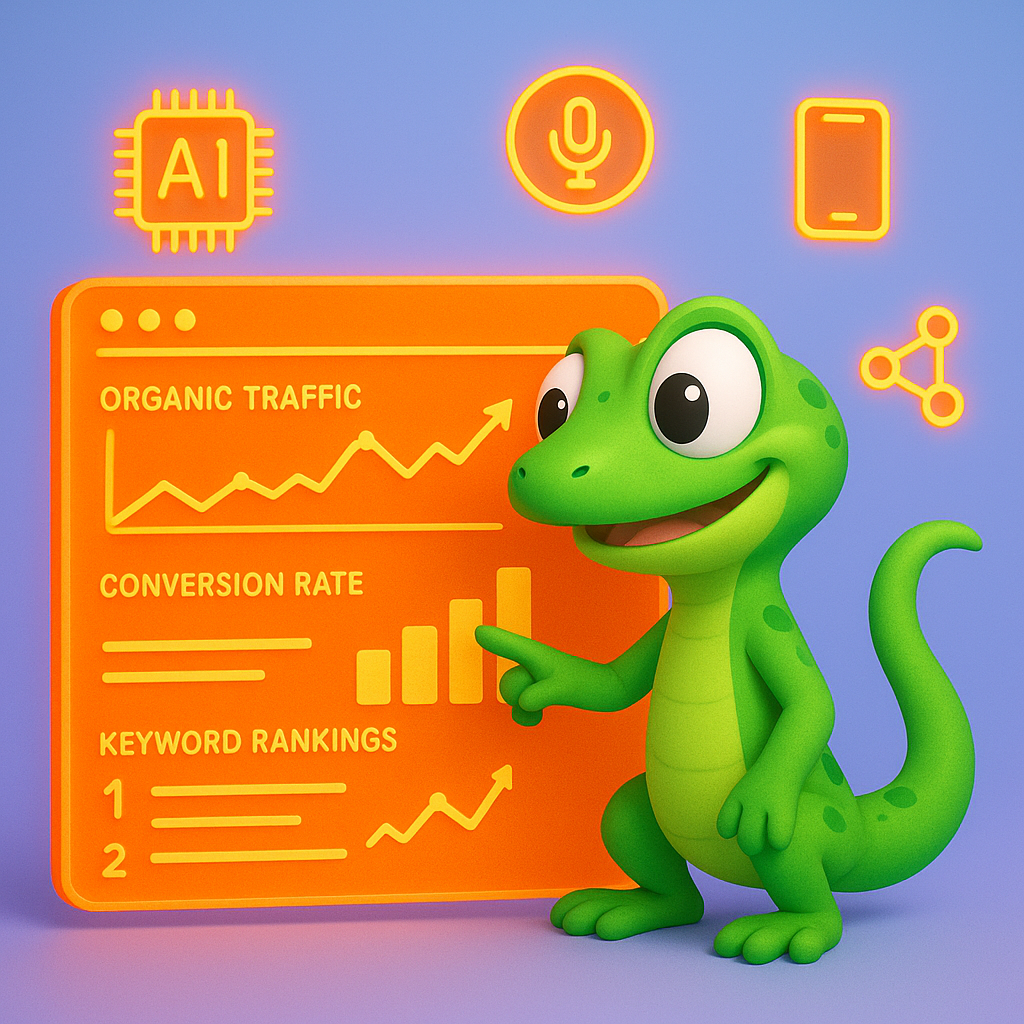Optimize content for SEO: strategic insights for long-term traffic growth
Effective SEO content optimization isn’t just about sprinkling keywords throughout your pages. For marketing leaders and SEO professionals seeking sustainable organic growth, it requires a strategic approach that balances technical requirements with user experience while adapting to evolving search algorithms.
The foundations of SEO-optimized content
At its core, SEO-optimized content must satisfy two masters: search engines and human readers. While algorithms have evolved significantly, certain fundamental elements remain crucial:
Title tag optimization
Title tags continue to be one of the most influential on-page SEO elements, though Google now rewrites approximately 33% of titles in search results. To maximize control:
- Keep titles between 40-60 characters (525-535 pixels on desktop)
- Place primary keywords early in the title
- Use sentence case formatting
- Avoid unnecessary verbs or fluff phrases
Studies show titles within the optimal character range are 57% more likely to avoid Google rewrites, maintaining your intended messaging and click-through potential.
Content structure and formatting
Modern SEO requires strategic formatting that signals relevance to both search engines and readers:
- Use a clear H1 that incorporates your primary keyword
- Implement H2s and H3s for logical subtopic organization
- Structure content to address search intent directly
- Incorporate schema markup to enhance SERP visibility
As Google increasingly prioritizes user experience metrics, the way you structure content significantly impacts both rankings and engagement. Implementing schema structured data markup can substantially improve how search engines interpret your content and display it in results. Case studies show implementing FAQ schema has improved click-through rates by 15-20% for how-to content.
Strategic keyword implementation
The days of optimizing for single keywords are over. Today’s SEO requires a more sophisticated approach that ContentGecko calls SEO 3.0 - viewing your website as an interconnected ecosystem rather than isolated pages.
Keyword clustering and topical authority
Instead of targeting individual keywords, organize content around semantic clusters:
- Identify primary and secondary keyword groups
- Map clusters to specific content pieces
- Create comprehensive, authoritative content for each cluster
- Interlink related content to build topical authority
Using a free keyword clustering tool can help you organize keywords into logical groups based on search intent and semantic relationships. This approach builds stronger topical authority signals to search engines while creating a more coherent user experience.

Search intent optimization
Content that doesn’t match user intent won’t rank well, regardless of keyword density. Four primary intent categories exist:
- Informational: Users seeking knowledge (how-to guides, tutorials)
- Navigational: Users looking for specific websites
- Commercial investigation: Users researching products/services
- Transactional: Users ready to purchase
When creating keywords for SEO, analyze search intent by examining current SERP results. If top-ranking pages are all how-to guides, creating commercial content for that keyword will likely fail.
For example, a query like “waterproof Bluetooth speaker under $100” signals clear purchase intent, while “how to choose a Bluetooth speaker” indicates research-stage intent. Your content structure should align precisely with the dominant intent pattern.
Technical SEO considerations
While content quality is paramount, technical factors significantly impact your SEO success:
Page speed optimization
Google’s Core Web Vitals have made page speed a critical ranking factor. Pages that load slowly face significant ranking disadvantages, particularly on mobile devices.
Key speed optimizations include:
- Image compression and next-gen formats
- Minimal CSS/JavaScript
- Browser caching implementation
- Server response time optimization
Studies consistently show that pages meeting Core Web Vitals thresholds outrank competitors with similar content quality but poorer technical performance.
Mobile optimization
With Google’s mobile-first indexing fully implemented, mobile optimization isn’t optional. Ensure responsive design, readable text without zooming, and tap targets with adequate spacing.
This is particularly critical in the US market, where mobile search volumes remain consistently high. Regular website audit reports can help identify technical issues affecting your content performance.
Measuring SEO content performance
Without proper measurement, you can’t improve your SEO content strategy. Key metrics to track include:
Visibility metrics
- Keyword rankings (track with keyword tracking tools)
- SERP features (featured snippets, knowledge panels)
- Organic impressions
Engagement metrics
- Organic traffic (segmented by landing page)
- Bounce rate and time on page
- Pages per session
Conversion metrics
- Conversion rate from organic traffic
- Revenue/leads from organic channels
- Return on investment (calculate with an SEO ROI calculator)
Implementing proper Google Analytics SEO reporting and Data Studio SEO dashboards provides the data foundation for continuous optimization.

Consider the 80/20 rule of SEO - often, 20% of your content drives 80% of your results. Regular performance analysis helps identify these high-performing assets for further optimization and expansion.
Emerging SEO content trends
Search is evolving rapidly, and staying ahead requires awareness of emerging trends:
AI and search evolution
As AI-powered search becomes mainstream, optimization strategies must adapt:
- Position critical information early in content for AI overviews
- Structure content with clear headings and FAQ sections
- Implement FAQ schema for enhanced visibility
- Focus on comprehensive, factual content that AI systems can parse
For example, Netflix increased organic traffic by 143% in Japan by replacing culturally irrelevant terms with localized alternatives - a strategy that works equally well for optimizing content for AI comprehension.
Using an AI SEO content writer can help create content optimized for both traditional and AI-powered search experiences. However, avoid overreliance on default AI settings; customize prompts for tone, audience, and objectives to maintain brand voice and expertise.
Voice search optimization
With voice search continuing to grow, optimize for:
- Conversational, question-based queries
- Featured snippet opportunities (position zero)
- Local search intent for regional businesses
- Natural language patterns
Localize keywords for regional variations (e.g., “trainers” vs. “sneakers” in US vs. UK markets) to capture voice search queries that often reflect colloquial language patterns.
TL;DR
Effective SEO content optimization requires balancing technical elements with user experience while adapting to evolving algorithms. Focus on strategic keyword implementation through clustering, match content to search intent, ensure technical fundamentals like page speed are addressed, measure performance through comprehensive analytics, and stay ahead of emerging trends like AI search and voice optimization. By viewing your website as an interconnected ecosystem rather than isolated pages, you’ll build sustainable organic traffic growth that delivers long-term business value.
ContentGecko provides AI-powered SEO content assistance that helps marketing leaders implement these strategies at scale, enabling up to 10x growth in monthly organic traffic without requiring extensive teams or resources.
